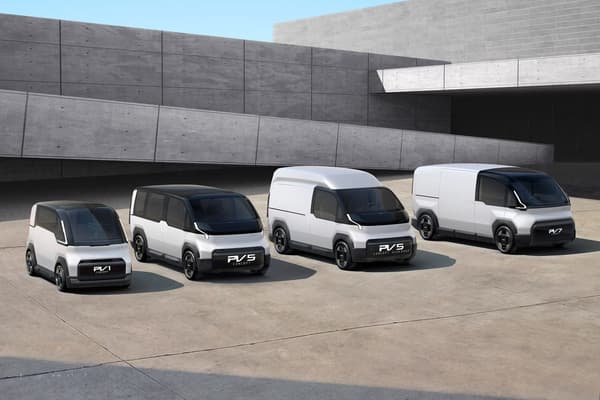Uber and South Korean automaker Kia announced the signing of an electric vehicle deal Wednesday at the Consumer Electronics Show (CES) in Las Vegas.
In a joint press release, the two groups say they are committed to “collaborating on the development and deployment of Kia’s planned PBV (vehicles).

The utility vehicles and vans of the future
The Korean manufacturer presented a new range of electric utility vehicles called PBV, for “platform beyond the vehicle.” Plus concepts on what is presented, all with a four-wheel drive (PV7) on a small vehicle (PV1), in addition to the fact that Kia presents a multi-purpose model (PV5) optimized for different types of vehicles, such as VTC transport, the release or public services.
In this context, and although the production version of the PV5 will be launched in 2025, the group’s management indicated that an “important global collaboration” with Uber would be formalized on Wednesday, refusing to give more details.
This partnership aims to “strengthen the offer of electric vehicles” on the platform and “support (Uber) in achieving its goal of zero emissions in 2040,” they explained.
To do this, Kia will produce “optimized” PBVs, prototypes “tailored for Uber drivers.”
The two partners also intend to work to “moderate” the cost of vehicles for drivers, including battery costs.
“Platform drivers adopted electric vehicles very early, going electric six to seven times faster than the general public in the United States and Europe,” said Susan Anderson, vice president of development at Uber.
The PV5 can transform from a passenger car to a delivery vehicle or van, using interchangeable modules depending on the owner’s intended use, or become an autonomous robotaxi-type vehicle.
The PV1, a very agile small utility vehicle
More designed for last mile deliveries, the little PV1 is equipped with wheels that can rotate 90 degrees for easy maneuvering. All four wheels can also reach this steering angle, which also allows lateral “crab” movements, as we can see in the video below.
Kia’s goal is to produce 150,000 PBV vehicles, all models combined, by 2025 and to gradually increase the pace to 300,000 per year by 2030. A new factory is therefore being built in Hwaseong, South Korea. South.
Source: BFM TV

